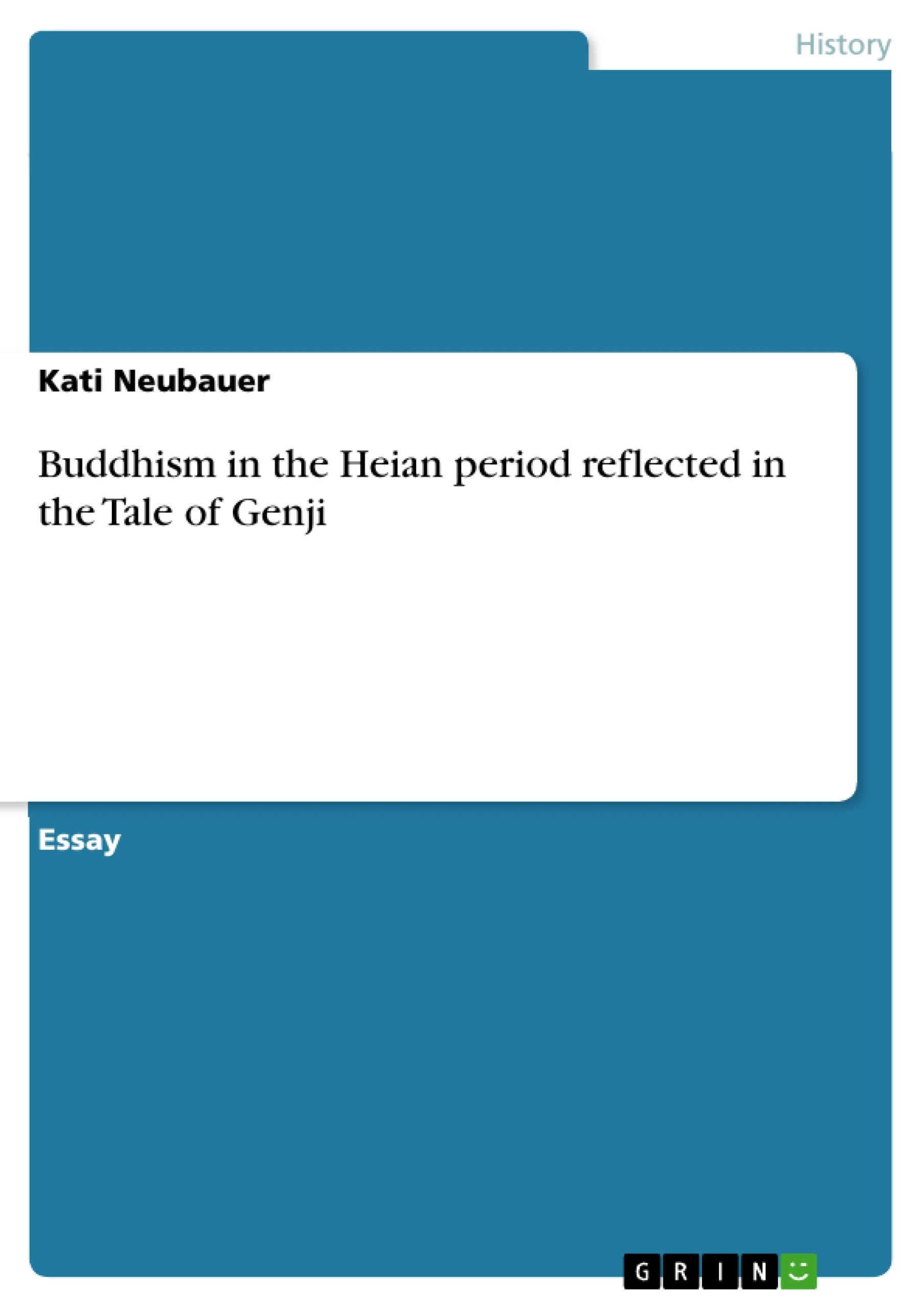The Tale of Genji (TG) by Murasaki Shikibu written in the late 10th Century describes an aristocratic worldview in the Heian period (794-1185) and allows therefore a closer look at the religious and spiritual understanding of the Japanese upper class in this timeframe. Before discussing Shikibu’s view on Buddhism the characters’ access to Buddhism will be focused on by first, discussing official appearance and second, private practise.
Inhaltsverzeichnis (Table of Contents)
- Buddhism in the Heian Period Reflected in the Tale of Genji
- Official Appearance
- Buddhist Rites in Court Life
- The Influence of Monks and Nuns
- Private Practice
- Personal Religious Acts
- Purification for the Afterlife
- Murasaki Shikibu’s View on Buddhism
- Becoming a Monk or Nun
- The Finiteness of All Beings
Zielsetzung und Themenschwerpunkte (Objectives and Key Themes)
This preview aims to provide a comprehensive overview of the novel *The Tale of Genji* by Murasaki Shikibu, written in the late 10th Century, focusing on its depiction of Buddhist practices and beliefs within the Heian period (794-1185) Japanese aristocracy. The preview explores the role of Buddhism in the daily lives of the nobility, analyzes the author’s religious worldview, and highlights the interplay between official and private religious practices. Here are some key themes explored in the text: * **Buddhism as a Practical Tool:** The novel demonstrates how Buddhist rituals and beliefs were integrated into the daily lives of the Heian aristocracy for practical purposes such as healing, childbirth, and spiritual support. * **The Influence of Buddhist Institutions:** The text highlights the influence of Buddhist temples and monks, particularly those from Mount Hiei, on the imperial court and the personal lives of the nobility. * **The Impact of Karma and Rebirth:** Murasaki Shikibu explores the concept of karma and its influence on the characters' lives, demonstrating how past actions shape present circumstances and future possibilities. * **The Author's Worldview:** The novel reveals Murasaki Shikibu's own understanding of Buddhism, emphasizing the impermanence of life and the importance of appreciating the present moment. * **The Role of Religion in Social Context:** The preview examines the tension between individual religious practices and societal expectations, particularly within the courtly setting, highlighting the impact of religious beliefs on personal decisions.Zusammenfassung der Kapitel (Chapter Summaries)
The novel *The Tale of Genji* depicts a vivid picture of the Heian Period aristocracy, showcasing the prominent role of Buddhism in their lives. The characters utilize Buddhism in various ways, from seeking spiritual support in times of illness or childbirth to preparing for the afterlife. The novel highlights the influence of Buddhist institutions such as Mount Hiei and the practices of monks and nuns on the nobility. While the characters actively engage with Buddhist rituals and practices, Murasaki Shikibu, as the author, presents a more complex understanding of Buddhism. She emphasizes the concept of karma and its influence on the characters’ lives, suggesting that their choices and actions have consequences that extend beyond their current lives. Shikibu further explores the tension between personal religious devotion and the social pressures within the court environment, highlighting the complexities of living a religious life within a worldly society. The preview emphasizes the impact of Buddhist beliefs on the lives of the characters, demonstrating how they cope with personal crises, seek solace in religious practices, and ultimately prepare for the inevitable end of life. The novel explores the interplay between official Buddhist institutions and personal religious acts, offering insights into the intersection of religion and social life in the Heian period.Schlüsselwörter (Keywords)
The primary keywords and concepts explored in this text revolve around the intersection of religion and society in the Heian period. The focus is on Buddhist practices and beliefs as they were reflected in the lives of the aristocracy, including themes of karma, rebirth, purification, and the afterlife. Key institutions such as Mount Hiei and its associated Tendai sect are crucial to understanding the influence of Buddhism on the imperial court and the personal lives of the characters. The novel also investigates the relationship between individual religious devotion and societal expectations, shedding light on the complexities of living a religious life within a worldly environment.
Excerpt out of 4 pages
- scroll top
- Quote paper
- Kati Neubauer (Author), 2008, Buddhism in the Heian period reflected in the Tale of Genji, Munich, GRIN Verlag, https://www.grin.com/document/133377




